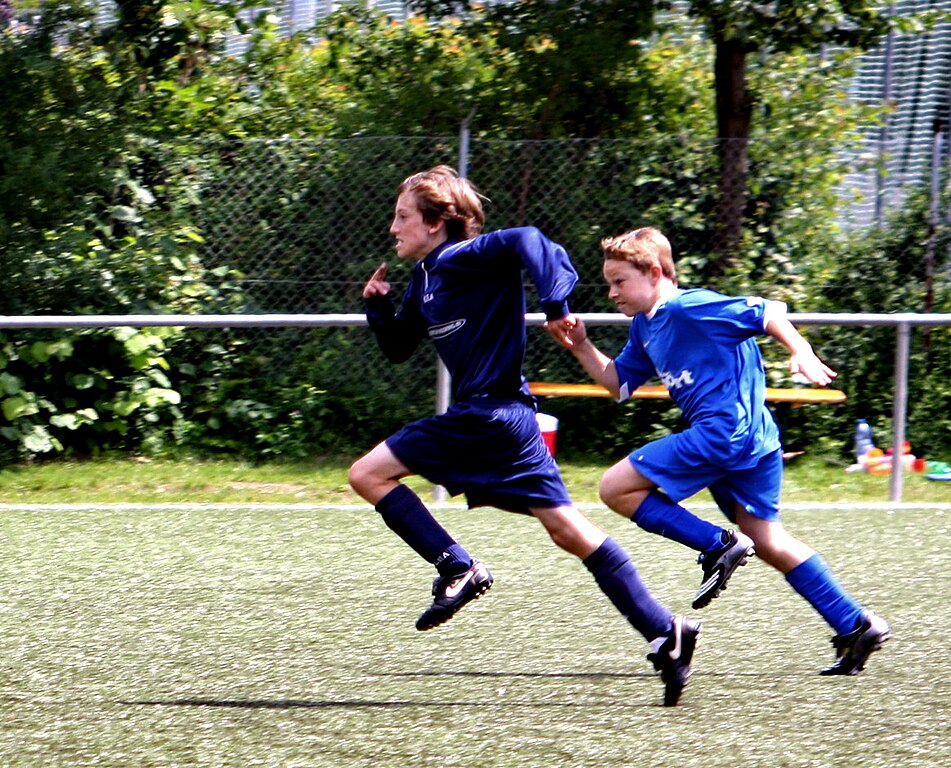Turning Defence into Attack: The Grassroots Football Team’s Guide to Counter-Attacking Training Drills

While it might be a dying art in the upper echelons of the football pyramid, counter-attacking football is an effective way to win against the odds. But in order to perfect it, a huge amount of hard work is required on the training pitch.
Particularly in grassroots football, there are some huge differences in quality between teams competing for honours and those trying to scrape together the odd win. A perfectly timed and executed counter-attack has the potential to turn the tables in an instant. With pace, awareness and know-how, even the most deficient football teams can cause an upset.
We’ve compiled a series of counter-attack training drills any football team can use to improve their ability to transition quickly without leaving holes at the back.
Passing for Quick Transitions
A player may only have a split-second to make the defence-cutting pass capable of creating a goal-scoring opportunity. If it’s not accurate, perfectly paced and delivered at the right time, the opportunity will pass by.
Set up a small-sided pitch with football cones and some high-quality portable football goals, and perform this simple yet effective drill.
Set up a small-sided game (7v7 or 8v8) on a small-sided pitch.
The attacking team should focus on quick, accurate passes and lots of movement.
- The defensive team should sit back and defend deeply.
- At the right time, a defending player should attempt to regain possession and break through the opposition's defensive lines with a single pass.
- Emphasise regaining possession and launching a counter-attack immediately after losing the ball.
- Encourage players to exploit spaces behind the opponent's defensive line.
- Encourage players to think outside the box and mix things up with quick one-twos and long balls over the top.
Overlapping Wing Play
Defending with a narrow back line is a great way to squeeze the play, but when you transition into a counter-attack, you should aim to quickly add width to your team’s shape. This simple drill should get everyone on the same page.
- Set up a scenario where wingers practice overlapping runs.
- Place football markers on the flanks to simulate wide areas.
- Players on the wing should make overlapping runs and deliver crosses.
- Focus on the timing of runs and exploiting space during counter-attacks.
Set-Piece Counter Attacks
How many times have you seen a defending team turn an opposition’s corner into a goal at the other end? In most cases, this scenario isn’t a fluke — it’s the result of hours spent perfecting set-piece transitions on the training pitch.
- Practice counter-attacking from defensive set-pieces.
- Set up a corner or free-kick defensive scenario.
- Train the goalkeeper to distribute quickly to initiate a counter-attack.
- Encourage defenders and midfielders to make forward runs.
- Create a plan that dictates who goes and who stays to defend.
3v2 Attacking
It’s a scenario you’ll see on television regularly. A quick transition quickly becomes a 3v2 chance that requires calm heads, accuracy and timing. Set up the final third of a pitch with a football goal and some football markers — and get your players to repeat this scenario in groups of three. Over time, they’ll develop an understanding with each other.
- Organize a 3v2 situation with attackers against defenders.
- The attackers must quickly exploit the numerical advantage and counter-attack.
- This drill enhances players' ability to make quick decisions in counter-attacking situations.
Long Ball and Sprint
With width and pace, turning defence into attack can be a relatively simple process with the right pass. A long, lofted ball to one of the flanks is sometimes all that’s required to give a winger or full-back the opportunity to score. Set up a pitch and practice this repeatedly. And consider giving your fastest players a little additional help with speed ladders, speed hurdles and speed rings.
- Practice accurate long passes from the defence or midfield.
- Encourage fast forwards to make runs behind the opposition's defence.
- Train players to capitalize on long balls and initiate counter-attacks.
Pressure and Transition
Pressing high is now the way most of the top football teams in the world play. The higher up the pitch you win the ball, the easier it is to create great goalscoring opportunities. Of course, there’s always the possibility of pressing at the wrong times or individually — leaving space behind for the opposition players to exploit. Lots of practice, communication and a pressing strategy is the answer.
- Create a scenario where a team is under pressure in their defensive third.
- Once they regain possession, they must transition into a counter-attack.
- Work on maintaining composure under pressure and launching effective counters.
2-Touch Counter
An opportunity to counter-attack may only last one or two seconds. To exploit it, you need to be direct and precise with your passes or runs. And the fewer touches you take, the greater the chance of catching the opposition unawares.
- Limit players to two touches during a small-sided game.
- Encourage quick passing and decision-making.
- Emphasize the importance of moving the ball swiftly to initiate counter-attacks.
Practice Makes Perfect
Drills need to be repeated in order to deliver long-term results. Practice, practice, practice; it’s the key to creating a counter-attacking team that regularly turns defence into attack.

